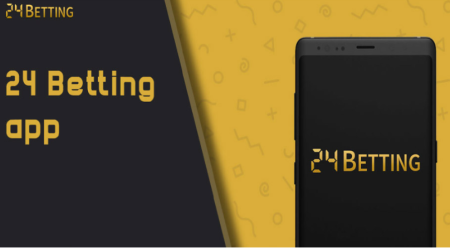Introduction
The cryptocurrency derivatives market has undergone rapid growth in recent years, with perpetual swaps (or perpetual futures contracts) emerging as a dominant trading instrument. Unlike traditional futures contracts that have expiration dates, perpetual swaps allow traders to hold positions indefinitely. This innovation offers immense flexibility and is especially favored in crypto trading for its potential to amplify profits using leverage.
But there’s a unique component that keeps the price of these instruments anchored to the spot market: funding rates. Understanding funding rates is crucial for any trader navigating the perpetual swap ecosystem, as it directly affects profitability and can signal shifts in market sentiment.
Whether you’re an active futures trader or exploring crypto derivatives for the first time, this guide will help you grasp what funding rates are, how they’re calculated, why they fluctuate, and how you can use them strategically.
What Are Funding Rates?
Definition
Funding rates are periodic payments exchanged between long and short traders in a perpetual swap contract to keep the contract’s price aligned with the spot price of the underlying asset. These payments are not charged by the exchange but are transferred peer-to-peer between market participants.
- When the funding rate is positive, long traders pay short traders.
- When the funding rate is negative, short traders pay long traders.
This mechanism ensures the perpetual contract doesn’t deviate too far from the spot price, preventing arbitrage inefficiencies.
Key Characteristics:
- Set by the market, not by the exchange.
- Typically exchanged every 8 hours (depending on the platform).
- Calculated using interest rate differentials and the premium index.
Why Funding Rates Matter in Trading
Impact on Profitability
Even if your trade is directionally correct, excessive or unexpected funding payments can erode profits or exacerbate losses.
Sentiment Indicator
Funding rates often reflect market sentiment:
- Positive rates = Bullish sentiment (more longs).
- Negative rates = Bearish sentiment (more shorts).
Arbitrage Opportunities
Some advanced traders exploit funding rate discrepancies by entering delta-neutral positions across multiple platforms to collect funding fees.
Platforms like CryptoExplodeAI offer real-time data on funding rates, helping traders identify patterns and execute profitable arbitrage strategies.
Factors Influencing Funding Rates
1. Market Imbalance
If more traders are long, the funding rate tends to be positive as longs are willing to pay to maintain their positions.
2. Price Deviation
When the perpetual contract trades at a premium to the spot price, the funding rate increases to incentivize shorts to enter and close the gap.
3. Market Volatility
High volatility often leads to larger funding swings as traders rapidly shift positions.
4. Interest Rates and Platform Policy
Different exchanges use varying formulas that include interest rate components and premium indices.
Case Study: Bitcoin Futures During 2021 Bull Run
During Bitcoin’s surge to over $60,000 in Q1 2021:
- Funding rates on platforms like Binance and Bybit exceeded 0.1% per 8 hours.
- This meant that holding a long position for just one day could cost 0.3% of the position value.
- Traders with highly leveraged long positions saw profits offset by massive funding costs.
- Meanwhile, contrarian short traders profited simply by collecting funding payments, even as BTC climbed.
This illustrates the double-edged nature of high funding environments—profitable but potentially draining if not managed properly.
Trading Strategies Based on Funding Rates
1. Trend Confirmation
Use funding rates as a tool to confirm trend direction. Consistently positive rates may reinforce a bullish trend, while negative rates could indicate sustained bearish pressure.
2. Reversal Trading
Extremely high or low funding rates often precede market reversals. For instance, extremely positive rates can signal over-leveraged longs, leading to liquidation cascades and price pullbacks.
3. Neutral Arbitrage (Cash & Carry)
Hold a spot long while opening a perpetual short. This hedged position earns funding payments when rates are high, with minimal exposure to price volatility.
4. Avoiding Trap Trades
Avoid jumping into a position just because of price movement. Always consider the funding cost over time—especially with high leverage.
For smarter trading insights and alert systems tailored to funding rate shifts, consider tools offered by CryptoExplodeAI, which aggregates funding trends across top exchanges.
Pros and Cons of Funding Rates
Pros:
- Helps align contract prices with the spot market.
- Provides arbitrage and hedging opportunities.
- Offers insight into market sentiment.
Cons:
- Can lead to unexpected losses in high-rate environments.
- Encourages over-leveraging in trending markets.
- Adds complexity to futures trading.
Conclusion
Understanding funding rates is critical to mastering perpetual swaps in the cryptocurrency market. These periodic payments serve as the economic glue holding perpetual contracts in line with spot markets while offering signals for sentiment and volatility.
While funding rates can offer valuable opportunities—especially for arbitrageurs and sophisticated traders—they can also quietly drain your capital if ignored. Always factor funding costs into your trading plan, especially in high-volatility or high-leverage environments.
Ultimately, the key to success lies in monitoring trends, applying strategic risk management, and using advanced tools to stay ahead of the curve. Platforms like CryptoExplodeAI can serve as your command center for funding analytics, making it easier to optimize trade entries and exits.
FAQs
What is the funding rate in perpetual swaps?
It is a fee paid between traders every few hours to keep the perpetual contract price close to the spot market price.
Who pays the funding rate?
The side of the market with more open interest typically pays—when longs dominate, they pay shorts, and vice versa.
How often is the funding rate paid?
Usually every 8 hours, but it varies by exchange. Always check the platform’s policy.
Can funding rates be negative?
Yes, when short interest exceeds long interest, shorts pay longs.
Do all exchanges charge the same funding rate?
No. Each platform calculates it differently, though the underlying principles are similar.
How can I benefit from funding rates?
By identifying favorable rate environments and executing delta-neutral or reversal trades, you can profit from funding payments alone.
Can funding rates change suddenly?
Yes. They’re influenced by market demand, volatility, and open interest imbalances.
Should I avoid trading during high funding periods?
Not necessarily, but it’s wise to factor the cost into your risk/reward analysis.
Is there a cap on how high the funding rate can go?
Some platforms implement maximum limits to prevent excessive charges, but extreme market conditions can still lead to high rates.
What tools help monitor funding rates?
Platforms like CryptoExplodeAI offer funding rate trackers and analytics across multiple exchanges for strategic trading.














